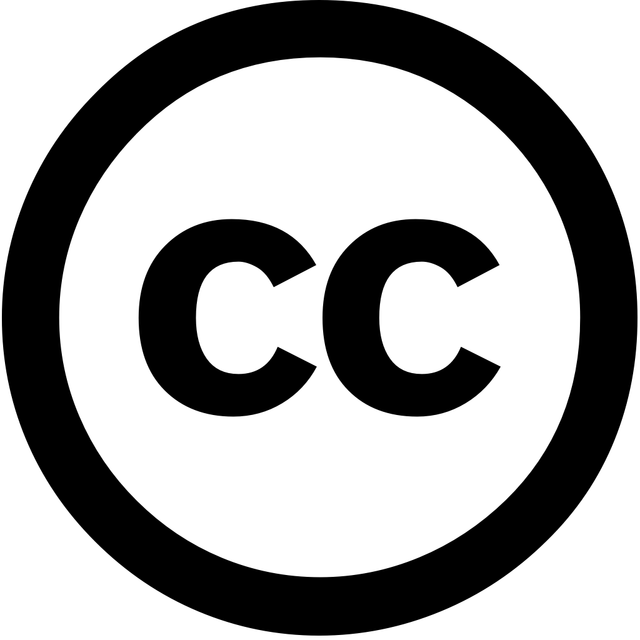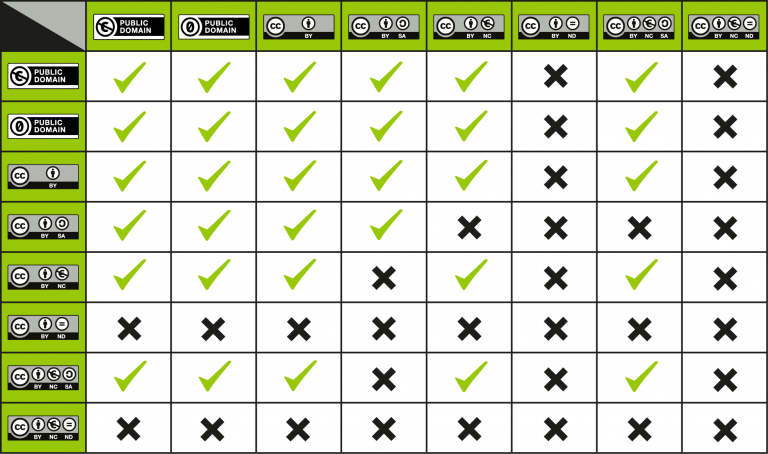 Brief Introduction to Creative Commons and CC-Licensing
Brief Introduction to Creative Commons and CC-Licensing
Creative Commons is a non-profit organization founded in 2001, which has developed licenses that you can easily use to authorize specific kinds of reuse and modification of your creative works. Creative Commons explains that their licenses “create a balance inside the traditional ‘all rights reserved’ setting that copyright law creates,” which basically means that they have hammered out the related legal issues and created ways to confidently mark a creative work for other kinds of use within the bounds of copyright law.
Before outlining the different CC licenses, let’s go over a few general points.
- As the copyright holder of material you create, you retain your right to profit from your work, no matter how you have CC-licensed it.
- CC licenses last as long as your copyright lasts, and can’t be revoked.
- In order to legitimately license your work, you must have sole ownership of the copyright.
If you have other general questions about these licenses, see the Creative Commons FAQ.
Creative Commons Licenses
There are six different Creative Commons licenses. The basic requirement for all six is attribution, which should include at least the original author’s name, title of work, and accompanying license.
- CC BY: Others can do pretty much whatever they want with your work, as long as they say who the work was originally “by” (this is attribution) This is the most “open” license.
- CC BY-SA: Others can do pretty much whatever they want with your work, as long as they attribute you and, if they change it, license any changed work in the exact same way. (SA=share alike)
- CC BY-ND: Others can use your work if they credit you, but they can’t change it in any way (ND=no derivatives).
- CC BY-NC: Others can use and change your work if they credit you, even license the changed work differently, but they can’t make money off of it (NC=Non-commercial).
- CC BY-NC-SA: Others can use and change your work if they credit you and aren’t making money off of it, but they have to license any changed work in the same way as the original.
- CC BY-NC-ND: Others can use your work if they credit you, but they can neither change the work nor profit from it.
Creative Commons has also created a public domain license, if you want to waive all rights to the created work.
For those of you who would like to see an more visual explanation of these elements and licenses, here is a video from censiCLICK (note that this video also explains the relationship between CC licenses and the public domain, which I will talk more about later in this post).
Creative Commons Licenses, Explained, censiCLICK: CC-BY 2.0
Using the licenses: Attribution
A good rule of thumb is to recall the acronym TAL, which stands for Title, Author, and License.
- Title – What is the name of the material? Please provide the title of the work you are adopting. Be sure to hyperlink the title to the original sources. If a hyperlink is not available, describe where you got the work.
- Author – Who owns the material? Please name the author or authors of the material in question. Sometimes, the licensor may want you to give credit to some other entity, like a company or pseudonym. In those cases, please just do what they request. Also, if the author has a webpage, please link to the author’s page.
- License – How can I use it? Please provide the exact name of the Creative Commons license under which the work was released, and hyperlink the license name to the license deed page. You can use the acronyms instead of full name of the license.
Using the Licenses: What licenses are compatible?
When people talk about licenses being “compatible,” they can be referring to several different situations.
One type of license compatibility involves the question of what licenses you can use for your adapter’s license when you adapt a work. For example, BY-NC is compatible with BY, in the sense that I can adapt a BY work and use BY-NC on my adaptation.
Another type of license compatibility relates to what licenses are compatible when adapting (more commonly referred to as “remixing” in this context) more than one pre-existing work. The remix chart below may be a helpful guide in these circumstances. To use the chart, find a license that applies to one of the works on the left column and the license that applies to the other work on the top right row. If there is a check mark in the box where that row and column intersect, then the works under those two licenses can be remixed. If there is an “X” in the box, then the works may not be remixed unless an exception or limitation applies.
CC License Compatibility Chart / CC BY 4.0
Another nice explanation of how combining licenses works can be seen in this video:
Creating OER and Combining Licenses, TheOGRepository / CC-BY-SA (3.0)
Activity
Take a few minutes to reflect on the licenses presented here, and about how they can be combined when you are pulling material from a variety of sources. You can try your hand at mixing licenses at the Creative Commons Mixer.
Now, move on to the next section, Finding CC Licensed Content for your Course.
Attribution
The above content adapted from:
- Open Content to Transform the Classroom by Matthew Bloom, licensed under a Creative Commons Attribution-ShareAlike 4.0 International License (adapted content available at:https://maricopa.instructure.com/courses/805732
- Learn OER managed by the Washington State Board for Community and Technical Colleges licensed under a CC-BY 4.0 (adapted content available at http://www.openwa.org/module-1/)
- Creative Commons Certificate for Educators by Creative Commons, CC-BY (adapted content available openly from https://certificates.creativecommons.org/about/certificate-resources-cc-by/)

Recent Comments